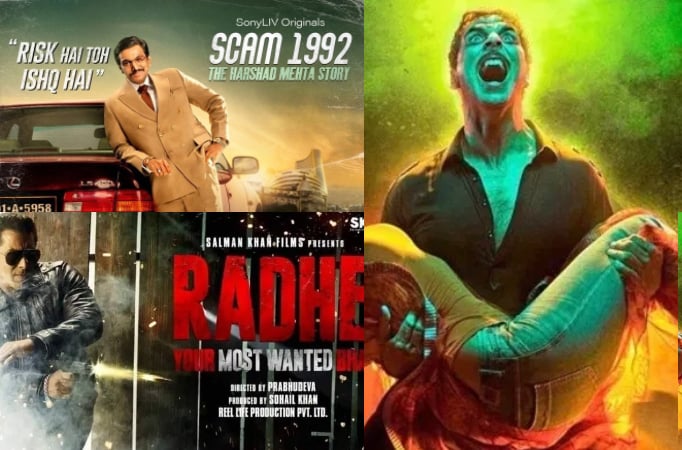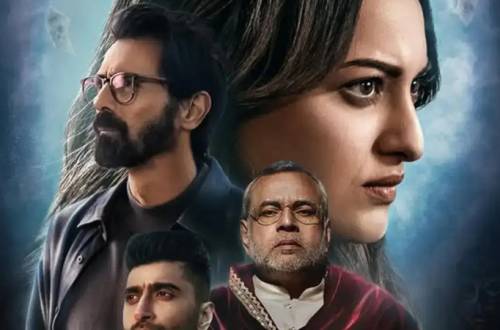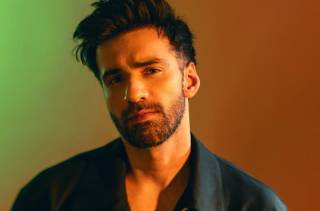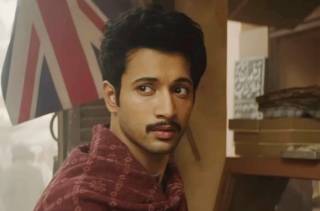
MUMBAI : The most exciting screen sensation over the past 12 months has been Pratik Gandhi, about whom most of India hadn't heard of before OTT gave us "Scam 1992". And, if you care about Bollywood, your most embarrassing experience over roughly the same period would be a tie between watching "Radhe" and "Laxmii", respectively starring the industry's biggest superstars, Salman Khan and Akshay Kumar.
Over the past year much has changed for stardom in the Hindi entertainment industry. The only occasions B-Town stars made news were when they posted pictures or videos on Instagram (mostly while vacationing in Maldives or getting vaxed for Covid). The odd set of stars took it upon themselves to tweet about the importance of wearing a mask, and nearly all of them, by turns, used social media to carp about how much they longed to go back to a film set.
With cinema halls shut and the flow of film releases stunted, the expensive PR machinery that has driven Bollywood stardom for years is fast running out of ideas to keep the limelight trained on their high-profile clients. The public is losing interest.
Rather, limelight in showbiz as we traditionally know it has all but been hijacked by two different breeds of artistes on two very different platforms.
The first is OTT, which has become a playground for a set of actors who have been living in the shadows of our superstars for long. Spurred by the advent of streaming culture, these actors have found due space to shine. These are artistes who do not hanker after image specifics -- many of them do not even hire the service of publicists -- but have managed to build a fan base by showcasing the sort of versatility that constricted Bollywood writing hardly ever allowed them to. From Manoj Bajpayee to Pankaj Tripathi, from Shefali Shah to Rasika Dugal, the list of such actors has impressively grown in the digital domain since last year.
Clearly, it is a great time to be an actor on OTT, for the only way to court fame in the digital space is by flaunting acting chops and the guts to take risks with roles and subjects. Suddenly, Vikrant Massey's low-key act as the complex protagonist in "Haseen Dillruba" garners more interest than Salman Khan managed with his one-dimensional machoman in "Radhe", which was hyped for months before release.
OTT is currently crafting the new definition of stardom. Content-driven performance is the all-new route to becoming the entertainment industry's newsmakers, thanks to the impact that the rise of streaming culture has ushered.
There is a second lot of showbiz personalities, too, which is hijacking the thunder of the Bollywood star, and creating a direct dent in old-school movie glamour. These are artistes belonging to the world of music videos.
Suddenly, music videos are trending topics. From the moment they are announced to the moment they actually trend on YouTube, social media reaction to non-film tracks over the past year has marked a culture shift in what defines popular music in India.
For decades, singers played second fiddle to mighty filmstars, and their biggest glory lay in scoring playback hits for the faces that lip-synced on screen. With the music video culture, the scene has changed. Arijit Singh, Armaan Malik, Jubin Nautiyal, Shreya Ghoshal and Neha Kakkar topline a generation of singers who are stars of their own work.
It's simple. Pandemic or no pandemic, Indians need their quota of entertainment to keep coming in. At a time when plastic superstardom has been locked out of the tinsel screen, the cellphone or laptop screen needs to be fed with what is commonly known in India as 'timepass' stuff.
As it is, Hindi films had started going slow on music over the past years and whatever quickfix soundtracks that emerged were banking on inane remixes. An ever-burgeoning music industry was hungering to find an outlet. With the pandemic restricting movement, YouTube emerged as the nation's biggest music hall.
New-age singers, composers, lyricists and music video makers closed in. Suddenly, every non-film song was telling a filmi story of love, hate, friendship, campus frolic, teenage angst, even pop patriotism.
Music videos have effectively emerged as 'cinema in a capsule', satiating the Bollywood fans' demand for a mix of celluloid drama and melody.
An important reason new-age non-film music has managed to keep the audience mind off the absence of Bollywood stars is that most music videos feature names who have a ready fan base owing to stints on television or reality television.
Sidharth Shukla, Shehnaaz Gill, Himanshi Khurana, Asim Riaz, Paras Chhabra, Nikki Tamboli have been among the top draws in music videos over the past months. By coincidence, they are all "Bigg Boss" sensations from the same season. Unlike past seasons of the show -- or any other reality show -- they represent a new breed of small screen stars who have learnt the trick of raising their game to match the big screen superstardom of Bollywood.
How does a Sidharth Shukla manage to rob a Salman Khan's thunder? (Sidharth won season 13 of "Bigg Boss", Salman's signature show). Or how does a Pankaj Tripathi become a trending topic compared to an Akshay Kumar? (Tripathi-starrer "Mirzapur" season two released barely a fortnight ahead of Akshay's "Laxmii").
Lockdown-induced closure of the cinema business answers both the questions. Bollywood stardom is nothing without its two crutches -- the big screen, which suitably magnifies heroism and filmi drama for the right impact; and smart marketing, which woos the audience psyche to be addicted by such an impact. An Instagram splash here or a Twitter sermon there would appear too trifling to leave any sort of a mark on the smaller screens of cellphones or laptops, where only substance would leave a lasting impression.
Substance, of course, has never been a prerequisite for Bollywood superstardom down the decades.
SOURCE : IANS
















Add new comment